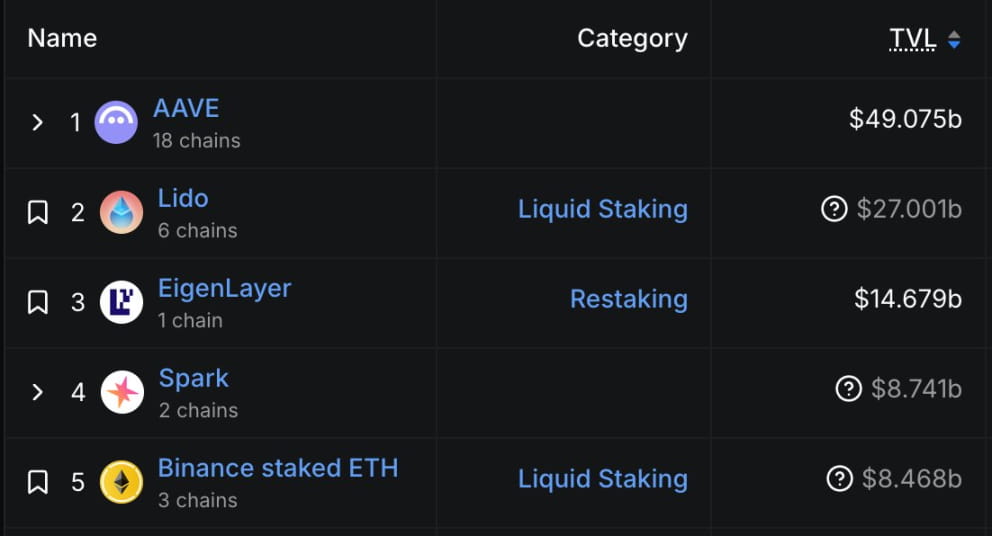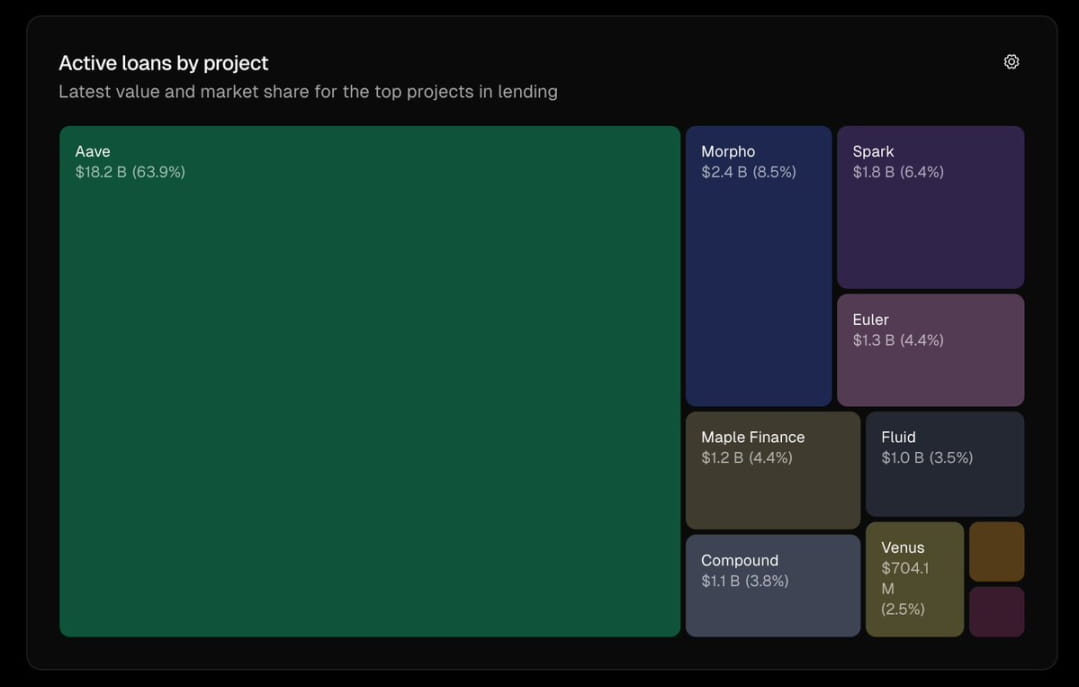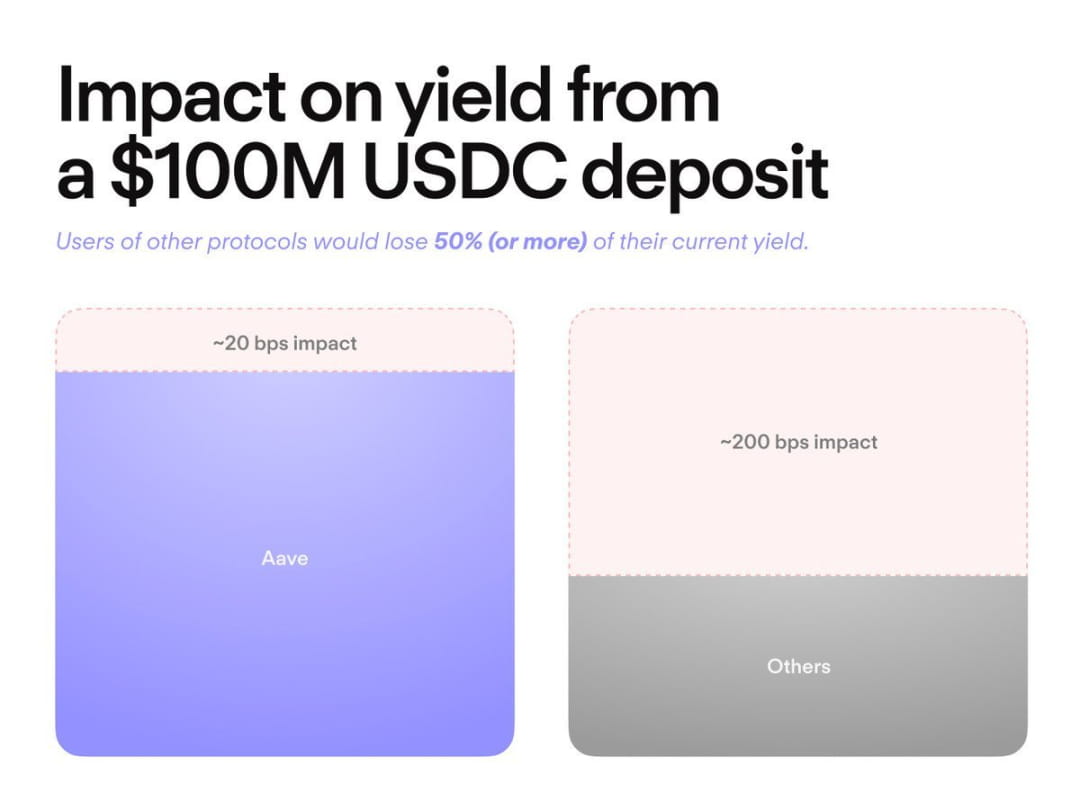Written by: Kolten, Aave, Avara
Compiled by: Alex Liu, Foresight News
In the realm of decentralized finance (DeFi), distribution capability determines everything, and no one does it better than Aave. With five years of market experience, millions of users, and the deepest liquidity in DeFi, projects built on Aave can achieve scale and network effects that are unmatched elsewhere.
Projects only need to integrate Aave to instantly gain access to the infrastructure, user base, and liquidity support that would typically take years to build—this is known as the 'Aave Effect'.
Some key data

Data source: DefiLlama
Aave is currently the largest protocol in DeFi, even the largest in history, accounting for 21% of the total locked value (TVL) in DeFi; 51% of the TVL of all lending protocols; with total net deposits exceeding 49 billion dollars. (Translator's note: it has now exceeded 50 billion dollars.)
While these figures are impressive on their own, what’s more important is the distribution influence that Aave possesses. For example:
After integrating Aave as a focus, Ethena's stablecoin sUSDe saw deposits surge from 2 million dollars to 1.1 billion dollars within two months;
Pendle achieved 1 billion dollars in deposits just weeks after its PT token was added to Aave, and this figure has now reached 2 billion dollars, making Aave the largest supply market for Pendle tokens;
After integrating Aave, KelpDAO's rsETH saw its TVL grow from 65,000 ETH to 255,000 ETH, achieving a fourfold increase in four months.
In addition, Aave hosts over 50% of active stablecoin assets, making it the largest destination for BTC in DeFi, and the only protocol with a TVL exceeding 1 billion dollars across four different networks. This distribution capability is unparalleled.
Why is all this happening?
Any protocol can attract deposits through incentives (such as token rewards or liquidity mining), thus driving the growth of asset supply, so looking solely at TVL is not enough to determine the true activity level of a protocol. At present, attracting deposits is widely recognized as a challenge, while stimulating the demand for asset use is very difficult—unless you are Aave.

Active borrowing volume, data source: Token Terminal
Aave's current active borrowing total exceeds 18 billion dollars, surpassing the total of all competitors combined. Aave is not just a simple staking platform; the assets deposited by users on Aave are either loaned out or used as collateral to borrow other assets, rather than simply 'lying in the pool.'
This creates a continuous demand mechanism in a positive cycle. When an asset is added to Aave, or a project is built on it, it can immediately benefit from this genuine market demand. All ecosystem participants benefit from the actual economic activities brought by the active user base.
This is particularly crucial for development teams wishing to build products based on Aave. Aave has withstood multiple market cycles, continuously gaining the trust of developers and users for five years, and has long managed billions of dollars in assets, far earlier than many of the current popular protocols.

More importantly, developers building on Aave are not constrained by 'capacity'. In contrast, Aave can accommodate a significantly higher supply and borrowing scale than competitors, making it highly feasible for fintech applications of any size, whether targeting retail, institutions, or both.
Future Outlook
With the upcoming launch of Aave V4, this 'effect engine' will continue to expand. The new architecture will bring richer asset support and new lending strategies for developers and users.
All elements that constitute Aave's core value—such as its distribution capability, trust base, and active usage rate—will be further strengthened in V4. If interested, it is recommended to read the article (Understanding Aave V4’s Architecture) for a deeper understanding of the upcoming updates.




